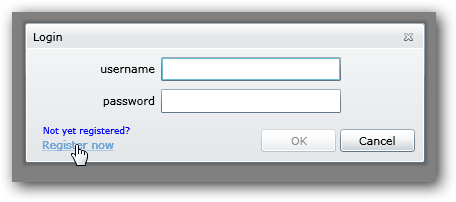.NET RIA Services Update with new Silverlight project template
| Comments- | Posted in
- silverlight
- xaml
- aspnet
- ria
- linq
- authentication
- riaservices
- membership
- domainservice
- linq2sql
We’ve update the .NET RIA Services build for May 2009. The updated May preview can be downloaded here: .NET RIA Services May 2009. You may have to uninstall your previous version before installing this one.
What is .NET RIA Services?
Microsoft .NET RIA Services simplifies the traditional n-tier application pattern by bringing together the ASP.NET and Silverlight platforms. The RIA Services provides a pattern to write application logic that runs on the mid-tier and controls access to data for queries, changes and custom operations. It also provides end-to-end support for common tasks such as data validation, authentication and roles by integrating with Silverlight components on the client and ASP.NET on the mid-tier.
This update incorporates a bunch of fixes that have been reported in the RIA Services forum. This is a good place to report issues and communicate with the dev team. Most fixes came from the forum. In addition, DomainService base classes now infer some data access metadata based on the model (length, required for example). There are a few other samples that were added to this as well to note:
- Authentication sample with ASPNET auth and EF methods exclusively
- LINQ2SQL DomainService example
Also upon installing you’ll see a new project type called the Business Application Template. Right now it looks and feels exactly like the navigation template with the Silverlight tools, but has a few defaults added, namely authentication. You’ll see in the ASP.NET project there with a Services folder and three new files: AuthenticationService, UserInformation, UserRegistrationService. These are all services to expose authentication and membership integration. Running the template by default will give you a new “login” link in the upper right and clicking on that implements a new ChildWindow for login:

Notice the "Register now” link which then uses another ChildWindow control for registration:

Registering a new user uses the UserRegistrationService to add a new user to the system. If you look at the UserRegistrationService you’ll see that it uses the ASP.NET Membership APIs:
1: namespace BusinessApplication2.Web
2: { 3: [EnableClientAccess] 4: public class UserRegistrationService : DomainService
5: { 6: // NOTE: This is a sample code to get your application started. In the production code you would
7: // want to provide a mitigation against a denial of service attack by providing CAPTCHA
8: // control functionality or verifying user's email address.
9: 10: public void AddUser(UserInformation user)
11: { 12: MembershipCreateStatus createStatus; 13: 14: // NOTE: ASP.NET by default uses SQL Server Express to create the user database.
15: // CreateUser will fail if you do not have SQL Server Express installed.
16: 17: Membership.CreateUser(user.UserName, user.Password, user.Email, user.Question, user.Answer, true, null, out createStatus);
18: if (createStatus != MembershipCreateStatus.Success)
19: { 20: throw new DomainServiceException(ErrorCodeToString(createStatus));
21: } 22: } 23: 24: // other methods exist here
25: // ...
26: } 27: } Because the membership APIs are provider-based, you can leverage whatever you want for your membership model and still use those APIs. The example uses the default mechanism in ASP.NET.
Download the updated RIA Services bits today and take a look at the new template for integrating with the various ASP.NET providers. Thanks for the continued feedback and keep it coming!
Please enjoy some of these other recent posts...
Comments